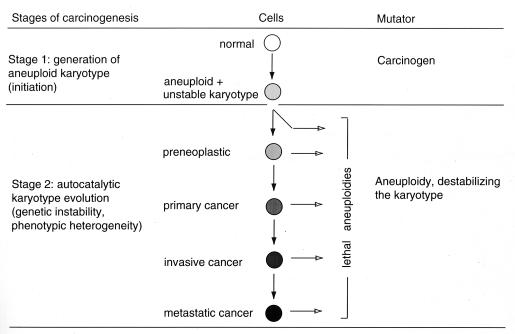Figure 2.
A two-stage model for how carcinogens may cause cancer via aneuploidy. Stage one: a carcinogen “initiates” carcinogenesis by generating an aneuploid cell. Stage two: aneuploidy destabilizes symmetric chromosome segregation, because it unbalances spindle and chromosomal proteins and centrosome numbers by unbalancing their chromosomal templates (see text). As a result, aneuploidy initiates autocatalytic karyotype variation and evolution, which generates new lethal, preneoplastic and eventually neoplastic karyotypes. The autocatalytic karyotype evolution would explain the previously unresolved carcinogen-independent transformation of an “initiated” preneoplastic into a neoplastic cell (8, 9, 62). The notorious long latent periods from initiation to carcinogenesis would be a consequence of the low probability of generating by chance a karyotype that can outperform normal cells. Autocatalytic karyotype variation would also explain the notorious genetic instability and phenotypic heterogeneity of cancer cells (9, 43).

